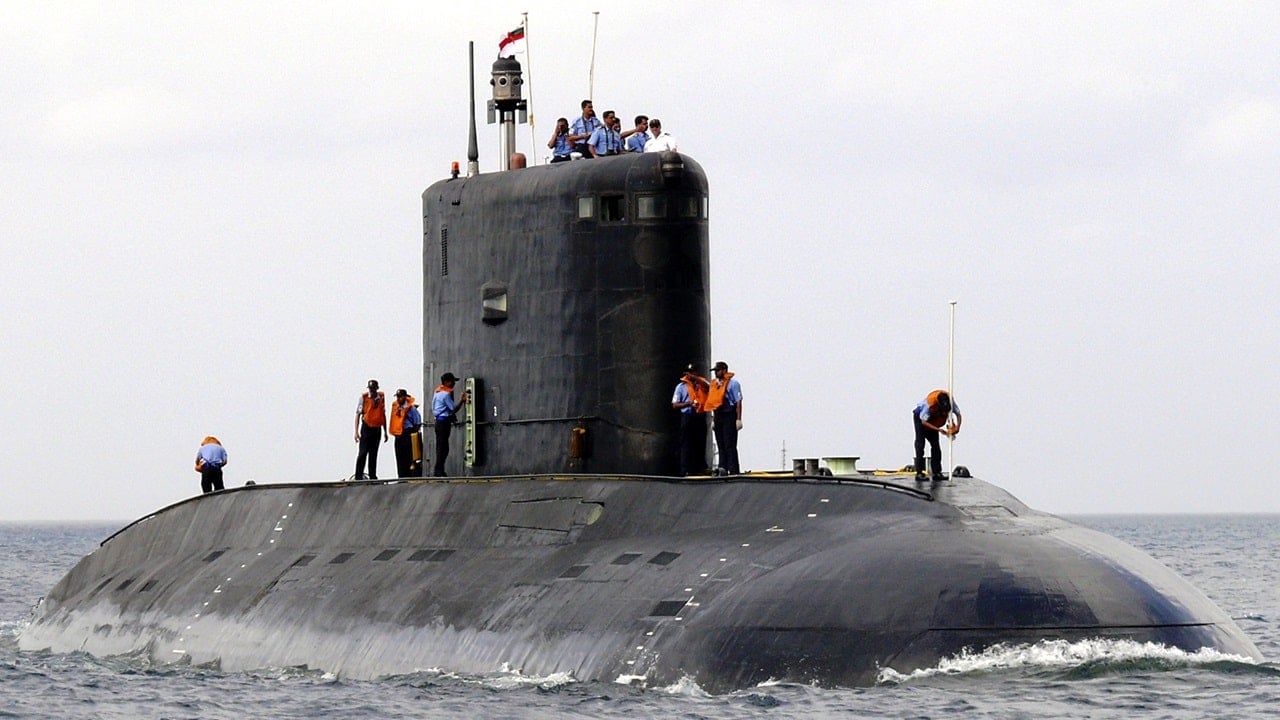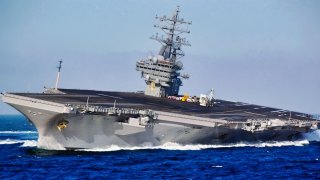China Used a Submarine from Russia to Track a Navy Aircraft Carrier
In 2015, a Chinese Kilo-class submarine (built by Russia) tracked the USS Ronald Reagan for half a day in the waters near Japan, highlighting rising tensions between the U.S. and China in the Indo-Pacific.
Summary and What You Need to Know: In 2015, a Chinese Kilo-class submarine (built by Russia) tracked the USS Ronald Reagan for half a day in the waters near Japan, highlighting rising tensions between the U.S. and China in the Indo-Pacific.
-Although there were no threatening actions, the encounter raised concerns about the vulnerability of American surface vessels in the region, particularly amid China’s growing naval capabilities.
-Some U.S. officials downplayed the event, noting that it allowed the U.S. to assess China’s submarine technology.
-However, the incident exemplified the growing challenge of Chinese surveillance and anti-ship missile systems, which could impede U.S. naval movements and power projection in future conflicts.
In 2015, U.S. defense officials acknowledged that a Chinese submarine tracked an American aircraft carrier in the waters of Japan. At the time, the incident showed how tensions were rising between the world’s two most powerful nations. It also raised questions that continue to remain relevant about the viability of American surface vessels in a potential conflict in the Indo-Pacific.
A Chinese Kilo-class fast-attack submarine tracked the USS Ronald Reagan for about half a day that October. A U.S. official at the time acknowledged that “it was more than a brief encounter.”
“There was no indication of threatening behavior, and no communications exchanged between the two craft,” CNN reported, “but American anti-submarine aircraft monitored the Chinese vessel.”
Tensions Rising in the Indo-Pacific
Then-U.S. Secretary of Defense Ashton Carter downplayed the incident, noting that any time the U.S. conducts joint exercises with Japan, the Chinese “come out and take a look at what’s going on.”
Chinese submarines tracking U.S. surface vessels raises concerns that have only grown over the last decade. But there’s a counterargument to be made as well: Did the Americans benefit somehow from the incident? “The truth is, we track them tracking us, and we learn about their capabilities,” Robert Daly, director of the Kissinger Institute on China at the Woodrow Wilson Center, said. “Chinese submarines are growing in number, but they’re still relatively noisy. They’re at least a generation behind us. And when they track us, we find out what they are capable of.”
Others were more concerned, however. “Some person cuts off the other one. Ships can collide. We’ve had cases where people didn’t understand intent, where gun-mounts were trained,” said retired Adm. Pete Daly. “there’s the potential for misunderstanding or the potential for a strategic miscalculation.”
In more recent years, threatening incidents have also proliferated in the skies over the Indo-Pacific region. Chinese aircraft will “buzz,” or shadow, U.S. aircraft. U.S. officials tend to condemn the Chinese when they bring their aircraft too close to American aircraft, but it is still somewhat more concerning when submarines manage to approach carriers. It all plays into concerns among war planners that the Chinese have developed technologies capable of harming U.S. carriers operating in the region.

Indeed, China is currently in the midst of one of history’s most ambitious shipbuilding sprees. As President Xi Jinping’s forces expand to include more surface vessels, more fast-attack submarines, and more aircraft carriers, Washington starts to wonder whether the Chinese may be able to limit U.S. naval movements in the Indo-Pacific – as a consequence undercutting Washington’s ability to project power in this crucial region. Additionally, China has developed a stockpile of intermediate-range and hypersonic anti-ship missiles, which could be used to inflict significant harm on U.S. surface vessels.
One of the most important defensive measures U.S. vessels have is the ability to hide within the vast expanses of the open ocean. To target U.S. vessels in a future conflict, Chinese forces would first have to find those vessels. The Reagan in 2015 was not working to evade detection while it operated off the coast of Japan, but the mere premise that a Chinese submarine tracked the supercarrier will always be a concern.
“I actually think it’s the beginning of a tense period,” Daly said at the time. “This is going to be a long process in which there is a mutual testing of limiting and sending of signals.”
About the Author: Harrison Kass
Harrison Kass is a defense and national security writer with over 1,000 total pieces on issues involving global affairs. An attorney, pilot, guitarist, and minor pro hockey player, Harrison joined the US Air Force as a Pilot Trainee but was medically discharged. Harrison holds a BA from Lake Forest College, a JD from the University of Oregon, and an MA from New York University. Harrison listens to Dokken.
Image Credit: Creative Commons.


